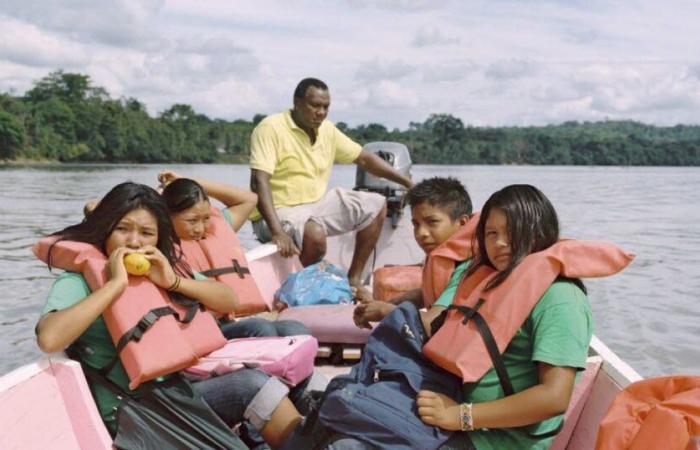Not a sound of engine on the Maroni: usually a veritable canoe highway, the river, marking the border between Guyana and Suriname, has been calm for weeks. The drought in the region has transformed it into a landscape that is as much aquatic as it is mineral. At the Hermina jump, a difficult passage near the town of Apatou, you have to zigzag between the rocks, being careful of the current which risks turning over or smashing the canoes against the reefs.
The canoeists put to the test
The most experienced canoeists carry out the maneuvers. “I hired a senior, he was the one who trained the two youngest,” comments Madeleine Akatia, manager of the AKM company, which provides the transport of people and goods on the Maroni.
Despite the canoeist's dexterity, the hull hit several times, causing jolts. “You see, that’s why we no longer transport primary school students,” says Madeleine Akatia, manager of the AKM company, which ensures the transport of people and goods on the Maroni.
The situation has been going on since the beginning of October. She does not want to take a risk by having children take this leap, most of whom are under 10 years old. On the other hand, the line which transports middle school students still works. “But the children go down, cross the jump on foot and get back in the canoe afterwards.”
“It’s been years since we’ve seen that”
Upstream of the Hermina jump there are several kampoe, dwellings gathered away from the town. The children who live there depend on the canoes to get to school. Along with planes and helicopters, canoes are one of the means of ensuring communication with the communities located upstream of Apatou. Their thousands of inhabitants depend largely on the river to receive freight.
Such a drought, “we hadn’t seen that for years,” sighs Madeleine Akatia, who has distant memories of a year “when we could cross the Maroni on foot.” The phenomenon affects “all of Guyana and the Amazon basin”, explains Emily Perquin, from Météo France. The territory has experienced a rain deficit which has lasted for 18 months.
Children deprived of school
At Ma Aiyé college, in Apatou, the management has adjusted the timetables, because the canoe journeys have been lengthened by the part that the students have to cover on foot.
Since the beginning of November, the situation has gotten worse: “the canoes arrive late,” laments the head of the school, who asked teachers to adapt their lessons. “Two weeks before the school holidays (All Saints' Day), around fifteen students were no longer present,” says Emmanuelle Saroul, director of Lambert Amayota elementary school, which has 256 students.
So families get organized. Some moved outside the kampoe, others entrusted their children to people living in the town. Out of all the establishments in the town, “around fifty schoolchildren can no longer go to school”, details the mayor, Moïse Edwin.
Concerns over drinking water and food freight
The councilor is also concerned about the delivery of drinking water: “we try to load the canoes as little as possible, but if the level of the Maroni continues to drop, we will have to contact the state services to see how we can transport it by air.”
Throughout Guyana, eight river school transport lines have already been interrupted, according to the prefect, Antoine Poussier. He also keeps an eye on food freight. The local airline Guyane Fly and the armed forces are mobilized to transport water and food to communities without roads.
France






